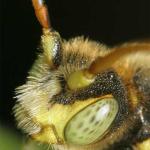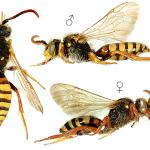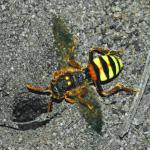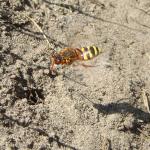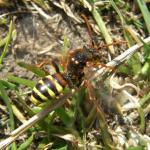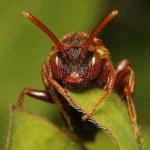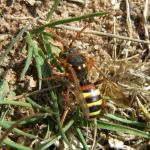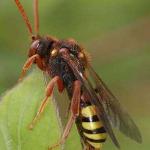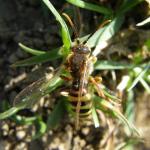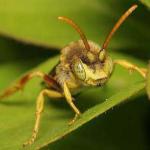Apis rufiventris KIRBY 1802; Apis alternata KIRBY 1802; Nomada consobrina DUFOUR 1841
A Nomada species with a tricoloured gaster and reddish hair on the thorax (more evident in the female) in Britain and Ireland is likely to be this species. Identification keys and general biology are given in Perkins (1919), Gauld and Bolton (1988), Michener (2000) and Else (in prep.).
East Cornwall to east Kent, north to Durham (Shotley Bridge). There are old records from Guernsey. Not recorded in Scotland and Ireland although its host is present in these countries. Seems to be decreasing in central and southern England and mainly concentrated in northern and western England. Overseas the range extends from southern Fennoscandia southwards in Europe and east to Siberia.
Listed as RDB3 (Rare) in Shirt (1987) and by Falk (1991). Recent data indicate that the status of this species could be downgraded.
Found in open sunny areas within the nesting sites of the host. Where the host is nesting in large compact aggregations Nomada males and females can be very numerous.
Usually univoltine. In northern England males fly from April until June but mainly during May, and females from April until July but mainly during May and June. These flight periods coincide, not surprisingly, with those of its host, Andrena cineraria. The rare records of females during August may represent a second brood. Fewer records are available from southern England but both males and females fly mainly during April and May, coinciding with the earlier flight period of its host.
Cherries (Prunus spp.), Gooseberry (Ribes uva-crispa), Creeping Willow (Salix repens) and Dandelions (Taraxacum spp.). Authors of profile M E Archer and G R Else.
Profile written:
Updated: 22/12/2011


